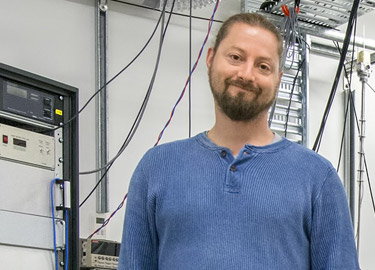
The emergence of atomically thin materials post graphene, has opened up new avenues for the engineering of electronic states via van-der-Waals heterostructures. For instance, tunable large bandgap 2D topological insulators, such as quantum spin Hall (QSH) insulators, have recently shown promise for device applications above 100K. On the other extreme of temperature, van-der-Waals heterostructures of QSH insulators can offer a new platforms to investigate the interplay of topology and superconductivity. Towards the latter end, I report on our recent progress in synthesizing the atomically thin QSH insulator tungsten ditelluride (1T’-WTe2) on van-der-Waals superconductors. Depositing 1T’-WTe2 atomic monolayers using molecular beam epitaxy (MBE) at low temperature in ultra-high vacuum (UHV), and without a buffer layer, we show that the electronic properties of the parent superconductor remains largely unaffected. Confirming crystal and electronic structure of the QSH monolayers using scanning tunnelling microscopy (STM), we observe clear signatures of proximity-induced superconductivity at 4K and below with a large pairing amplitude close to 1meV, promising a potentially scalable route to realizing 1D helical superconductivity.
About the speaker
Asst/Prof. Bent Weber is an ARC DECRA fellow and currently an Associate Researcher at NTU Singapore. Within FLEET, he works on the design, fabrication and measurement of molecular- to atomic-scale electronic devices, patterned with scanning tunnelling microscopy (STM).
